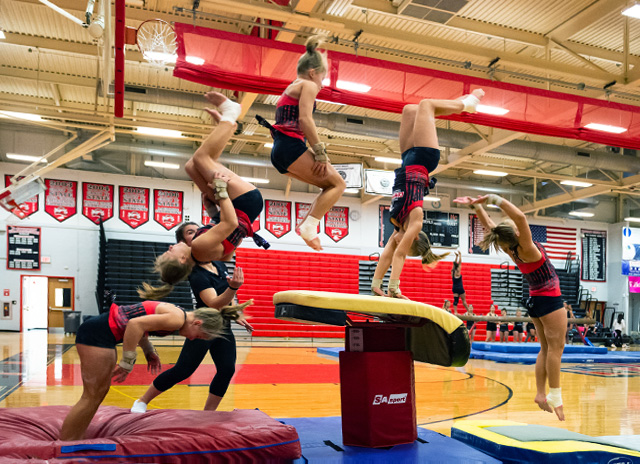The physics of rotation plays a large part of the movement of a gymnast.
Angular momentum equals the product of mass, velocity and distance from mass to axis of rotation. When a gymnast leaves the mat, they have all the angular momentum from their push-off that they will get, none can be gained or lost. However, for various moves, the gymnast will need to change their rate of rotation while in the air.
 flip
flipHow can they change their rate of rotation without pushing off on something? They do this by changing the distance of their center of mass from the axis of rotation. The angular speed increases or decreases by changing the distance between the mass and the axis of rotation.
For example, when a gymnast performs on the uneven parallel bars, she may start by doing a giant swing around the top bar to gain angular momentum. When she turns loose and tucks her mass in to decrease the distance between her body and the axis of spin, she starts spinning much faster. Her angular momentum is still constant because no external torque occurs.


 Upcoming Events
Upcoming Events